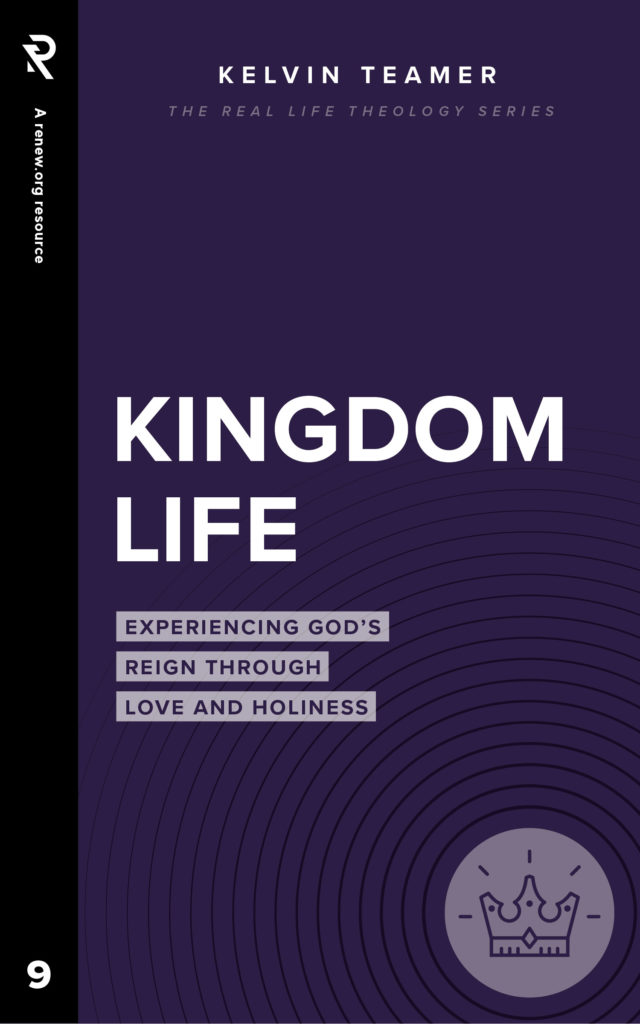
John Kotter on Leading Change: How Kotter’s 8 Steps Connect with the Mission of Jesus
When we consider the principles of John Kotter on leading change, we find a surprising correlation with how Jesus formed his disciples and launched his kingdom. Change in church is sometimes necessary for the sake of greater faithfulness and effectiveness. Yet leading change in church can be daunting. Kotter’s 8 steps to accelerate change can be a helpful guide to think through as you implement important change in church.
A few years ago, a friend and mentor of mine sent me a summary of the book Leading Change by John Kotter. At the time I was wrestling with a question: how do I help guide our church as we try to shift our culture to one that actively embraces Jesus’ mission to be disciples who make disciples who make disciples. Previously, our church had embraced a primarily attractional model—think, if you build it, they will come—but as a leadership we were becoming increasingly convinced that we had been called to something different, something more. I’m a step-by-step thinker, so I was looking for some practical guidance about what it looked like to lead a group successfully through real, meaningful change.
If you have spent any length of time leading groups of people, you know that working through change can be difficult. Even some of the most mundane changes are often met with opposition. In my years of ministry, I have seen things like changing from church pews to chairs, what color to pick for the new carpet, or adjusting the start time of the Sunday worship service create unexpected levels of tension and anxiety. So, as I contemplated the prospect of changing something deeply significant, like the culture of an entire church community, identifying a proven strategy for how to successfully implement such a change seemed wise.
Kotter on Leading Change
As I read through Leading Change, I was quickly impressed by the comprehensive approach that Kotter put forward with his original eight steps, as I was when I later read some of his more recent thinking in a short book called Accelerate: Building Strategic Agility for a Faster-Moving World. In fact, the more time I spent thinking through Kotter’s eight steps, the more I was convinced that he had a truly winning formula. I was excited to discover a strategy dedicated to leading the greatest amount of people who make up an existing organization, in my case a church, successfully through the turbulence of systemic change. If you have led a church or other organization through change, chances are you have factored in losing some people along the way, but what truly impressed me about Kotter’s deliberate and purposeful approach is that he seeks to maximize the number of people who embrace the change, or as he calls it in 8 Steps to Accelerate Change, the “Big Opportunity.”
As I dug even further into Kotter’s eight accelerators, another curiosity began to stir in me. Long before reading Kotter’s works, I had been a student, a disciple, of Jesus. Perhaps it is just me, I can remember wondering, but there was something about Kotter’s approach as he looked forward to the “Big Opportunity” that seemed to match up quite well with the way Jesus advanced his revolutionary change. So…I thought I’d try something. I overlayed the movement of Jesus’ ministry, described by the authors of the four Gospels, onto Kotter’s eight steps.
A Surprising Correlation
Now, if at first glance this seems forced to you, give me a chance to explain, and I think you will see why I decided to try this. You see, I’m convinced that Kotter didn’t invent an approach for leading change; instead, he discovered and later defined a process for leading change that reflects and honors many truths about human nature. And who would have known those truths better than Jesus? After some research, I have been unable to determine if John Kotter is a believer in Jesus, but whether he is or not, it must be acknowledged that sometimes, even separate from faith in Jesus, people through observation discover amazing truths about the way God designed human beings. I think that is the case with Kotter, and I hope to show you why as you read on.
So, as you contemplate leading change—and for some of you, this will be the same disciple-making shift we are leading our church through—I’ll recommend to you Kotter’s eight steps. Throughout the rest of this article, you will see why I think they match well the approach Jesus leaned into while on earth…all while facing the same struggles you and I do as we try to lead and shepherd people through change. Below is a brief summary of what I found as I contemplated each of Kotter’s eight steps in light of Jesus’ ministry.
Step 1: Create A Sense of Urgency
Kotter begins his conversation about leading change with the call to create a sense of urgency. Jesus began his ministry with the words, “The time has come…The kingdom of God has come near. Repent and believe the good news!” (Mark 1:15, NIV). Talk about creating a sense of urgency! According to Kotter, it is imperative that leaders create a sense of urgency because there is often the need to seize an opportunity that is within reach today but may not be tomorrow (Kotter, 2020).
Jesus told all those who were willing to listen that the time had come. Today was the day and the moment was now. As we seek to lead change, we must understand and communicate the urgency of the moment. As we choose to move ahead, by the grace of God we can! The importance of this step should not be underestimated. People respond to what they see as urgent but put off what they believe can wait for another day.
Step 2: Build A Guiding Coalition
Next, Kotter moves to the idea of building a guiding coalition. I have often wondered why Jesus choose a group of twelve men to come follow him everywhere he went. Beyond that, I have questioned why he chose the specific men he did. By the standards of first century Jewish culture, there was nothing that set these twelve apart from many others he could have chosen, and at first glance you might even say there were lots of good reasons not to choose the ones he did.
Here’s where Kotter’s thinking again lines up with Jesus’ course of action. As we set out to build a guiding coalition, Kotter’s encouragement is to embrace diversity. Many times, organizations build guiding coalitions of groups of likeminded individuals who are naturally drawn to each other; after all this tends to minimize tension in meetings. But by avoiding the tension, we miss out on the real benefits a diverse coalition will provide. Jesus picked his disciples from all walks of life: fishermen, a tax collector, a religious zealot, and others. He even encouraged the ministry of the women who followed him, which was more than unusual for a rabbi of his day. Jesus knew that he would need people from different walks of life—people with different experiences, personalities, backgrounds, etc.—to reach people from different walks of life.
Step 3: Form A Strategic Vision
The third step in Kotter’s sequence is to develop a strategic vision. If you are like me, you may struggle as you try to envision Jesus spending time developing a strategic vision. He was the Son of God; wouldn’t he have just known what the vision was? Maybe. It’s hard to know exactly what Jesus experienced as divinity interacted with humanity. What we do know is that Jesus absolutely had a strategic vision. Matthew 5-7, what we call The Sermon on the Mount, is full of Jesus’ vision for a new, radically transformed community. Some have even called this vision revolutionary. The Gospels also contain quite a few straightforward vision-oriented statements like this one from Luke 19:10: “The Son of Man came to seek and to save the lost.” Whatever you may think of Jesus, it can never be argued that he was a man lacking in vision.
If you and I want to lead others through change, we must take the time to develop a vision we can clearly articulate. As we move to Kotter’s fourth step, you will see why this is such a vital piece of the process. Vision, especially strategic vision, begins to answer the “What are we going to do about it?” question which inevitably emerges when the problem has been effectively communicated. It is also, according to Kotter, where head and heart meet, and we show those we are leading that they are a part of something bigger and more important than they had dared to imagine. This couldn’t be truer as we consider the grand scope of the plans that God has for his kingdom and for his Church!
Step 4: Enlist A Volunteer Army
The fourth step in the process begins as we communicate the vision to those we are trying to on-board. Of course, the guiding coalition has already been marinating in the vision, as well as the developing implications, but in this phase the task is to share it with everyone else who needs to know. In a church setting, this means preaching the vision, over and over and over again. And, yes, of course I mean from the stage, but we will likely need to identify additional ways of preaching the vision if we are to successfully recruit the kind of volunteer army Kotter refers to in his writings.
Jesus was a master at this kind of communication. He knew well how to preach to large crowds, and at the same time made the most of every opportunity with smaller groups as well. Jesus identified ideas, illustrations, and phrases that were deeply vision-connected, which he repeated on a regular basis, adjusting the emphasis as needed based upon the setting in which he was speaking. Think about the vision he cast for Peter and Andrew, two of Jesus’ fisherman disciples as he called them to follow him (Matthew 4:19): “Come, follow me…” This is the beginning of what it means to be a disciple. “And I will make you fishers of men…” This is how Jesus took his big vision for all who follow him and modified it to connect well with two guys who fished for a living.
“Jesus identified ideas, illustrations, and phrases that were deeply vision-connected.”
As Jesus shared his vision, he was looking to enlist an army of volunteers who would choose to journey with him and embrace his world-changing mission. Not everyone who listened to him said yes, but many did. The goal at this level is to reach a critical mass of sorts, which begins to work the desired change into the culture of the organization or movement. In Accelerate, Kotter says that somewhere between 15% and 50% is typically sufficient to move the ball forward. In order to reach this critical mass, you will need a strong vision, and the commitment required to communicate it well.
Step 5: Enable Action by Removing Barriers
Along the way, it is inevitable that those who seek to implement change will run into barriers. Some barriers to change are obvious, while others may exist below the waterline in a way that has enabled them to stay hidden for years. Good leaders work to challenge ways of thinking that are detrimental to progress. They are also willing to put pressure on organizational and cultural systems or structures that stand in the way of the things that matter most. To understand just how important this is, take just a minute to reflect on this statement from Accelerate: “Innovation is less about generating brand new ideas, and more about knocking down barriers to making those ideas a reality.”
So, let me ask you a question. How effective do you think Jesus would have been in advancing his Father’s mission if he had been unwilling to challenge the status quo? What if Jesus had been unwilling to confront the religious leaders of the day, many of whom were twisting the words of God to their own purposes? Nearing the end of his bodily ministry on earth, Jesus engaged in some brutal verbal cage matches with the Pharisees, even calling them a brood of vipers (Matthew 12:34, 23:33). Don’t think for a second that Jesus’ actions went unnoticed by his disciples and the crowds who followed him. Many of the same religious leaders that apposed Jesus would later be part of the group that persecuted the early Church. But the Church would push forward anyway. Inspired by the example Jesus had shown them, they continued to challenge the status quo for the sake of the mission they’d been given.
Step 6: Generate Short-Term Wins
If you have spent any time casting vision for those you lead, you have probably felt the tension I am about to address. Vision typically addresses what could one day be. As we cast vision, we point somewhere out on the horizon, hoping to inspire others to say yes to what will likely be a long journey—but one with a worthwhile destination. The problem with long journeys, however, is that they are difficult to complete, especially if the road becomes bumpy along the way. And when we navigate change, we know the path isn’t guaranteed to be a smooth one. So how do we gather momentum for the long road ahead? By generating short-term wins.
Jesus seems to have known this as well. I want you to think specifically about two similar situations recorded in Luke’s gospel. The first is detailed in chapter 9, and the second in the very next chapter. In both situations, Jesus sends out those who had been following him, first the twelve, then a larger group of seventy-two, to do the work he’d been modeling for them. He gave them power to heal and drive out demons and told them their task was to proclaim the kingdom. As the seventy-two returned to Jesus, their excitement about their experience was evident: “The seventy-two returned with joy and said, ‘Lord, even the demons submit to us in your name’” (Luke 10:17 NIV). Jesus knew the power of generating short-term wins. If we are to be successful in leading change, we will learn the value of this step as well.
Step 7: Sustain Acceleration
After gathering some initial momentum toward the Big Opportunity, Kotter in Accelerate argues that it is imperative to find ways to sustain the acceleration. In this phase leaders should revisit the urgency that compelled the creation of the strategic vision, continue to cast the vision for those who may not have heard it yet (as well as taking steps to reinforce it with those who have), and continue to look for barriers that will inhibit future action.
In Luke 9 we see a quick foreshadowing of just how committed Jesus was to sustain acceleration as he saw the Big Opportunity ahead of him. I like the way the New Life Version translates verse 51 of this chapter: “It was about time for Jesus to be taken up into heaven. He turned toward Jerusalem and was sure that nothing would stop Him from going.” Even with the awareness that choosing to go to Jerusalem would cost him his life, Jesus was sure that nothing would stop him from going. He was determined. As we seek to sustain acceleration toward the opportunity that lies ahead of us, we will need a similar determination. Jesus continued to face obstacles. So will we. But if we keep the urgency, the vision, and the ultimate win in mind, we can lead forward with determination despite the challenges.
Step 8: Institute Change
Jesus’ unparalleled determination to bring his kingdom and the benefits of his reign to all those who would follow him led him to the embrace the cross (Hebrews 12:2). There he battled sin and death, and though it cost him his life, ultimately, we know he triumphed over his enemy and ours as well. Now he has authority over all things in heaven and on the earth (Matthew 28:18). With Jesus’ victory, the old order has been pushed out and things have truly changed. Even though Jesus has left the earth in bodily form, he sent the Holy Spirit to guide those who continue to live as his disciples. In fact, Jesus told his disciples that it was better if he left because of the critical role that the Holy Spirit would play in guiding all his kingdom people from that day onward.
Before he returned to the Father, however, Jesus took advantage of several opportunities to once again share the urgency of his mission, and the vision for living it out with his followers. Matthew 28:19-20, what we call The Great Commission, and Jesus’ words from Acts 1:8, reinforced for his first disciples all that he had done and all he hoped they would do from that day forward. Throughout the rest of the book of Acts, we see the good news of Jesus’ kingdom spread first through the city of Jerusalem, then through Judea and Samaria, and now in our day “to the ends of the earth” (Acts 1:8, NIV).
“Instituting change is all about making sure that new behaviors are repeated over the long term.”
According to Kotter in 8 Steps to Accelerate Change, instituting change is all about making sure that new behaviors are repeated over the long term. Cultural transformation is at the heart of what it means to institute long-lasting change. During this phase, all of the attention is on “making it stick.” In Leading Change, Kotter says that “change sticks when it becomes ‘the way we do things around here.’” The first disciples of Jesus made disciples who made more disciples. It was just the way things were—a part of the cultural DNA, you might say. Jesus’ leadership, and the way his first disciples would lead after him, left no doubt about what the long-term mission was. To win meant that the gospel would go to the ends of the earth. It’s just the way we do things around here!
Final Thoughts
If leading change is difficult, going at it without a plan is even more so. As you look for a way forward, I’ll point you first and foremost to Jesus. He is the best example of the kind of leader you will need to be as you help guide his church. But don’t ignore the advice of those who have spent time observing and defining what successful change ventures have in common within our current context. In that, I will recommend to you John Kotter. It helps to have a plan and a fair idea of where you are going next. Those we lead are looking for vision, clarity, and a sense that they are on the right path. As you lead, I’m in prayer for your efforts. May God bless you richly, as you seek to honor him in all you do.









